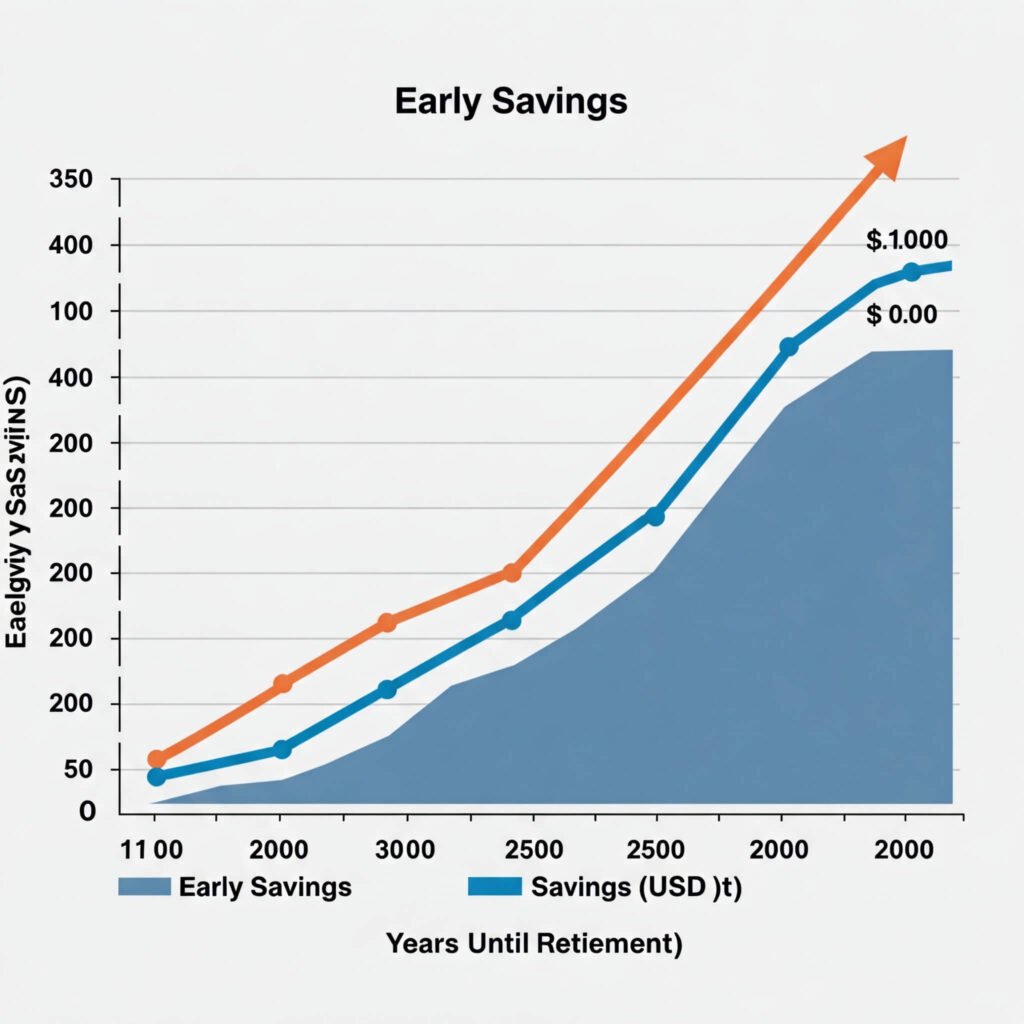Retirement savings is like trying to fix a leaky faucet in my cluttered Austin garage—sounds easy, but I keep dropping the wrench. I’m sitting here now, surrounded by rusty tools and the faint smell of barbecue sauce from last night’s takeout, my cat knocking over a paint can, and I’m thinking how I totally ignored retirement savings til I was pushing 30. Like, for real? I’m just a regular dude in Texas, not some finance hotshot, and I’ve blown cash on stupid stuff like vintage sneakers instead of saving for my golden years. Here’s my sloppy, human take on retirement savings 101, full of dumb moves and hard lessons, scribbled from my grease-stained notebook. It’s not perfect, I’m def not, and I might ramble, but let’s do this.
My Epic Fail with Retirement Savings: Don’t Do What I Did
Okay, straight up: Retirement savings hit me like a rogue longhorn at a rodeo. Back in 2023, I was all about living large—dropped way too much on a fancy guitar after seeing some X post about “seize the day” vibes. Picture me at a taco joint, bragging over a Lone Star beer, then checking my bank app and seeing I had nada for the future. Total buzzkill. NerdWallet says starting early lets compound interest work magic and I wish I’d listened instead of strumming my way to broke. Now I’m hustling with a 401k and IRA, tho I still get sidetracked by shiny things.
It’s like, you gotta start small but keep at it. I set up auto 401k contributions—Fidelity says even 6% of your paycheck is solid. Confession: I sometimes skip a month for dumb purchases, like that time I bought a drone I crashed in a week. Don’t be me.
Emergency cash: High-yield savings for when life goes sideways.
401k: Grab that employer match—it’s like free tacos.
IRA: Roth IRA for tax-free growth, Investopedia swears by it

Crafting a Retirement Savings Plan: My Half-Baked Attempts
Building a retirement savings plan is like barbecuing ribs without a recipe—takes trial and error, and I’ve burned plenty. I’m staring at my workbench, littered with old bolts and a half-eaten kolache, and I’m chuckling at how I thought I’d just “figure out” retirement later. Big oops. Fidelity says plan based on income and when you wanna retire. I’m aiming for 15% of my income, split between a 401k and Roth IRA, but I keep second-guessing, like maybe I should’ve started at 25?
Last year, I got hyped on a crypto tip from a coworker—thought it’d supercharge my retirement savings. Spoiler: It crashed, and I was eating canned beans for a month. That pushed me to diversify with ETFs and bonds, which Forbes says are clutch for 2025. I’m still a bit all over the place, but I’m learning to stick to boring stuff that works.
Emergency fund: 5% APY savings account, my safety net, if you earn $60,000 annually, aim for $600,000-$900,000 in savings. Break this into manageable monthly or yearly contributions.
ETFs: S&P 500 for steady growth, low fees.
Bonds: Treasurys to keep things chill.

Low-Risk Retirement Savings: Where I Finally Stopped Being Dumb
Low-risk retirement savings? I used to think that was for grandpas in rocking chairs. Picture me last summer, sweating in my garage, scrolling X, dreaming of being a crypto king by 50. Then the market tanked, and I was budgeting gas like a broke college kid. Now I’m all about high-yield savings and Treasury bonds—Bankrate calls them low-risk MVPs for 2025 . I’ve got some cash in a 4.7% APY account, and it’s like finding a $10 bill in your jeans—small win, big vibes.
Gold’s my other jam. I grabbed a couple ounces after reading about inflation hedges, stashed it in a lockbox with some old baseball cards—real high-class, right? It’s up like 6%. I still mess around with crypto for kicks, which is totally contradictory, but low-risk stuff keeps my retirement savings from imploding.

Hot Trends for Retirement Savings: My Random Discoveries
Okay, I’m hyped about new retirement savings trends. I was scrolling X last night, AC blasting against the Austin heat, and saw folks raving about green energy and AI stocks. J.P. Morgan’s all about AI for 2025, so I threw some cash into a tech ETF. It’s up, but I’m paranoid it’ll crash—classic me, freaking out over nothing.
Biotech’s another weird find. Forbes says it’s a long-term bet, and I tried a biotech fund that dipped then climbed back. I also sneak some cash into ESG funds ‘cause I wanna feel less bad about the planet, even if the returns are hit-or-miss. My big takeaway? Screwing up teaches you more than winning.
Numbered tips, ‘cause I’m feeling extra:
- Skim X for trends, but check Investopedia for real talk (https://www.investopedia.com/).
- Automate contributions—keeps me from buying dumb stuff like that drone I crashed.
- Rebalance every year; forgot in 2024 and it sucked.
So, that’s my hot mess of a guide to retirement savings 101, straight from a Texas dude who’s spilled barbecue sauce on his budget and still standing. I’m not perfect—far from it—but mixing a 401k, IRA, and some safe bets keeps me from losing my mind. Like, don’t be 2023 me, buying guitars instead of saving for the golden years. Peek at Fidelity’s tools (https://www.fidelity.com/retirement-planning) and start small. What’s your retirement vibe? Hit me with a comment—I’m all ears!
Outbound Link: Explore investment options at Vanguard.
Outbound Link: Avoid pitfalls with tips from Forbes.



